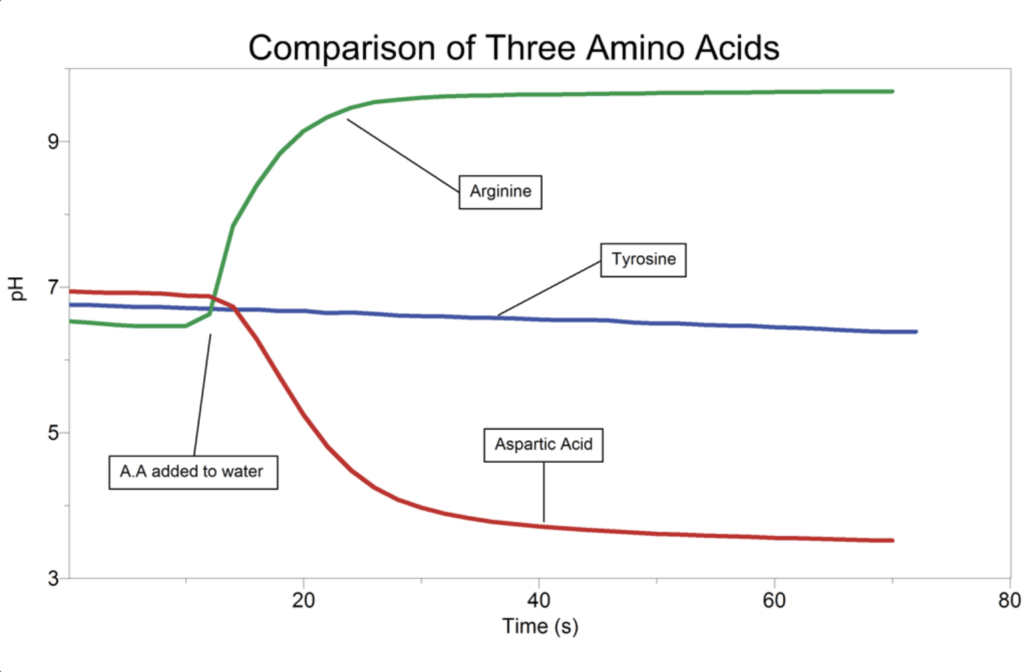A key concept in biology is how the structure of a protein determines its function. All proteins are made up of amino acids. The primary structure of a protein refers to the sequence of amino acids of which the protein is composed. The primary structure determines how the protein will fold, which will in turn determine its function. There are 20 different amino acids that are commonly found in proteins, and each one has a different side chain. These side chains are very important, because they impart each amino acid with different characteristics.
Amino acids can be characterized as polar, nonpolar, or charged. Charged amino acids are further characterized as acidic or basic. Uncharged amino acids can be considered neutral. As shown in the graph below, you can easily demonstrate if an amino acid is basic, acid, or neutral by using our Go Direct® Tris-Compatible Flat pH or Tris-Compatible Flat pH Sensor. All you need is some water, a magnetic stir station and a few amino acids. You can start with the amino acids arginine, tyrosine, and aspartic acid. Arginine is basic, tyrosine is neutral and aspartic acid is acidic.

pH measurement of amino acids using the Tris-Compatible Flat pH Sensor
